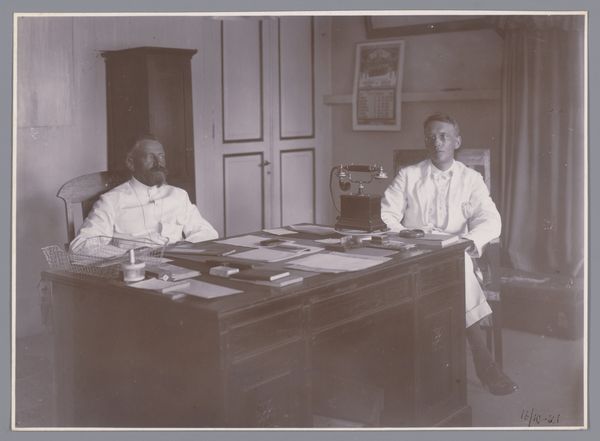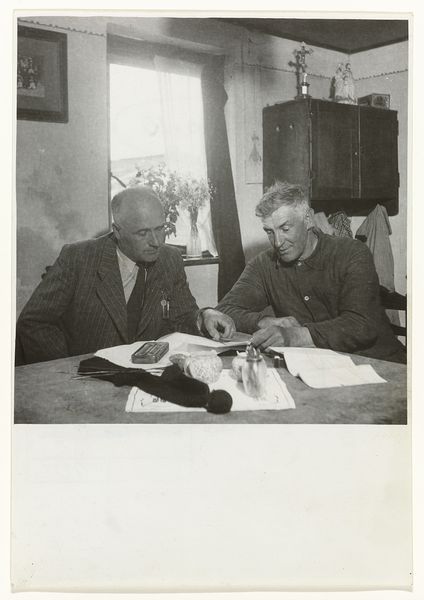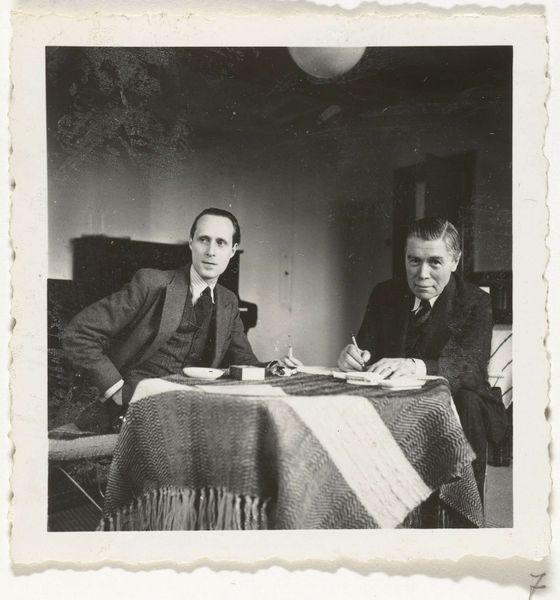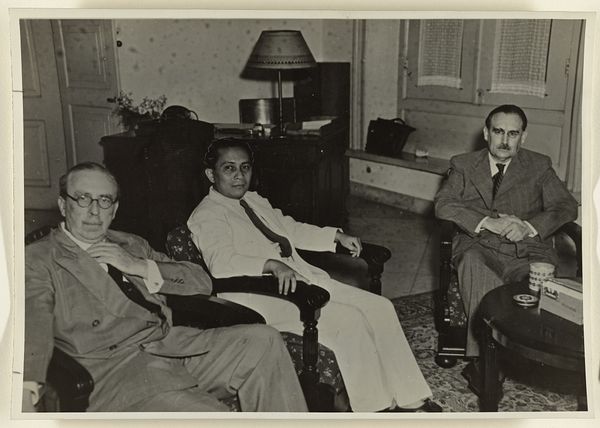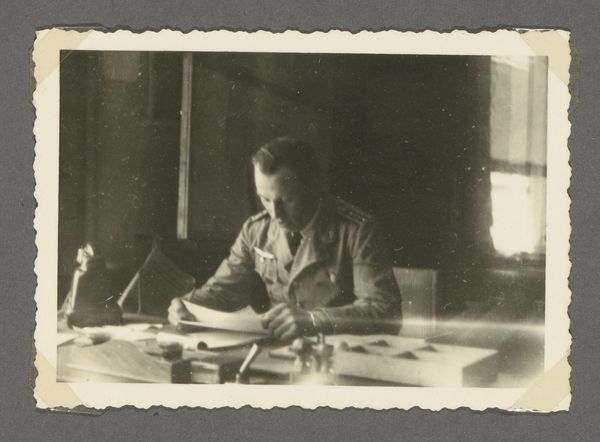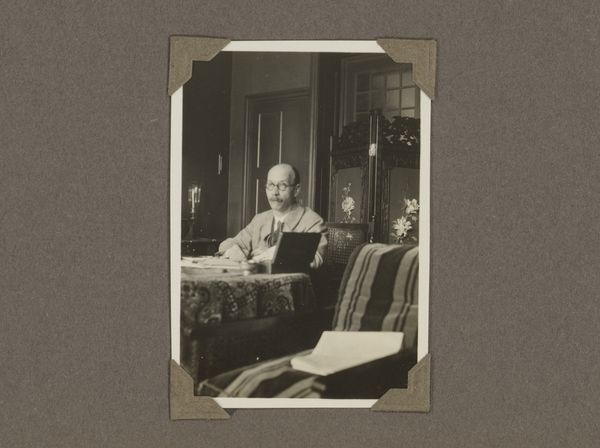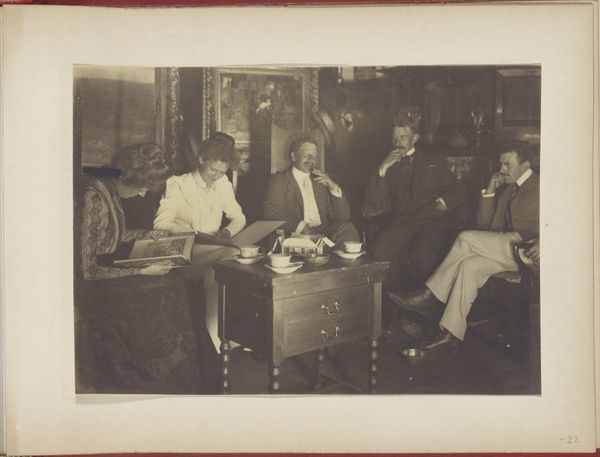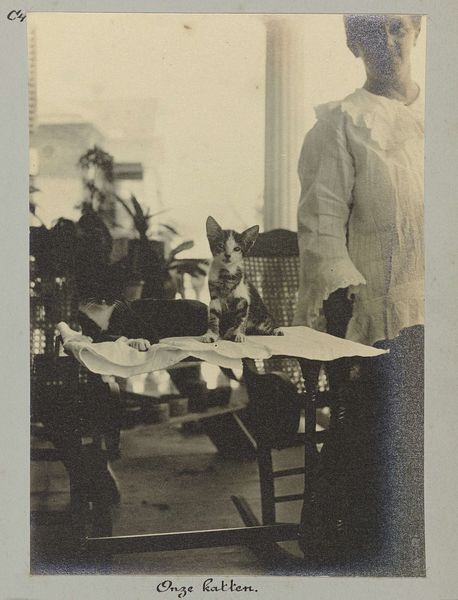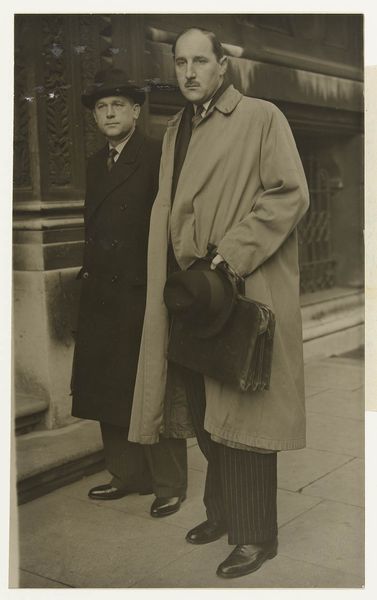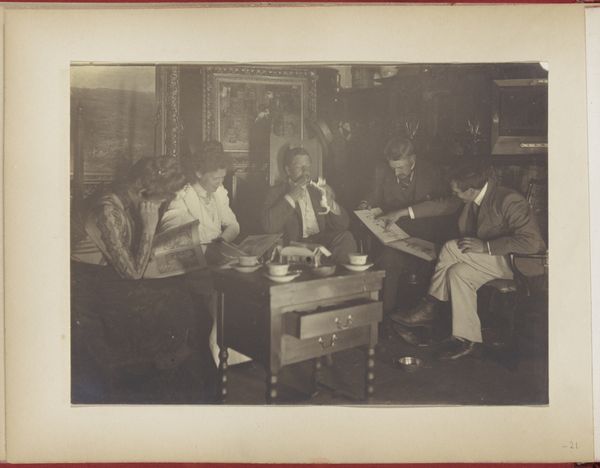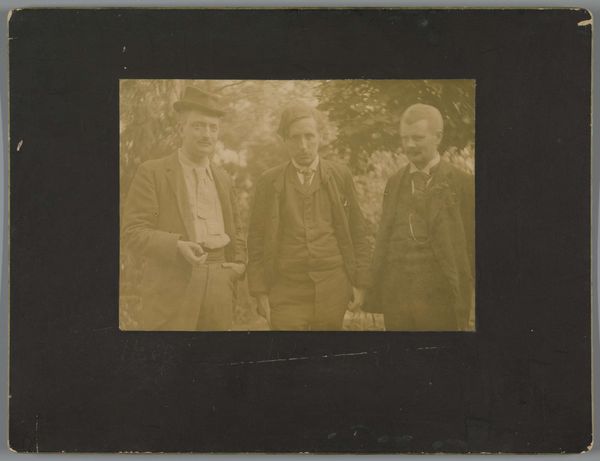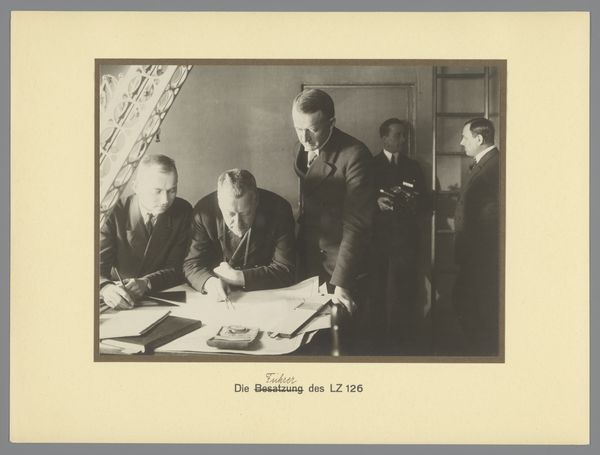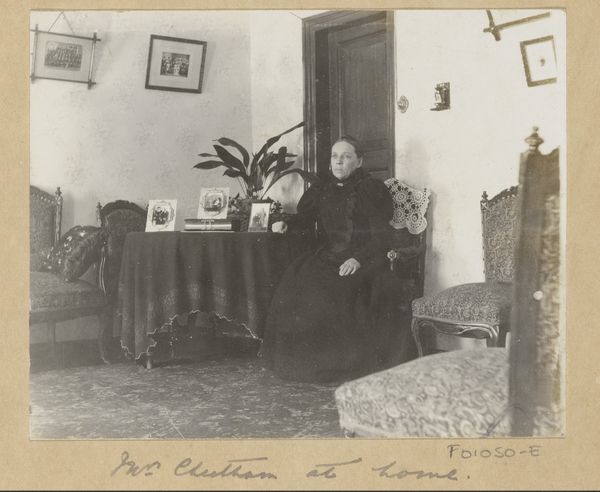
photography, gelatin-silver-print
#
portrait
#
print photography
#
photography
#
gelatin-silver-print
#
genre-painting
#
modernism
Dimensions: height 6.5 cm, width 6.5 cm
Copyright: Rijks Museum: Open Domain
Curator: Before us, we have an arresting photograph titled "Twee Duitse militairen," or "Two German Soldiers." Its creation is placed tentatively between 1940 and 1945. It's a gelatin silver print currently held in the Rijksmuseum. Editor: My immediate reaction is one of muted tension. The composition, while straightforward, has a kind of static energy. The restricted palette enhances the feeling of sobriety. Curator: It’s the very materiality of the gelatin silver print that speaks volumes. Think of the social conditions under which this image was produced, and consider its status as a historical document, produced, handled, and disseminated, during times of war. This reproduction suggests the banality of military occupation, far removed from battle. Editor: From a purely formal perspective, the arrangement is interesting. The contrasting postures—one figure faces us directly, the other is in profile. This directs our gaze and creates a dialogue within the image. The table bisects the picture, establishing balance while the muted tones evoke a subdued mood. Curator: The presence of a bandage on the one soldier also forces us to speculate about the materials and production of the photo, and consider whether it might have served as propaganda and been deliberately altered to sanitize warfare’s impacts and sanitize an ideology of violence. Editor: I see a study in contrasts. Light and shadow play across their faces, defining character. The details in their uniforms and the texture of the wooden table display attention to capturing surface and form. It suggests the artist was quite attuned to the semiotics of portraiture, despite the possibly surreptitious setting of the shot. Curator: The photograph embodies contradictions—an ordinary moment captured during extraordinary times. Its texture provides insights into the very nature of conflict during that period. Editor: I find it formally fascinating for how its restrained aesthetic generates a surprisingly charged effect. Its monochrome nature distills its subject down to essential components of light, shadow, and human form. Curator: Exactly. Ultimately, its historical and material presence, is now as much a subject as those young soldiers caught on camera. Editor: Indeed. An exercise in visual poetics wrought out of sombre realities.
Comments
No comments
Be the first to comment and join the conversation on the ultimate creative platform.
